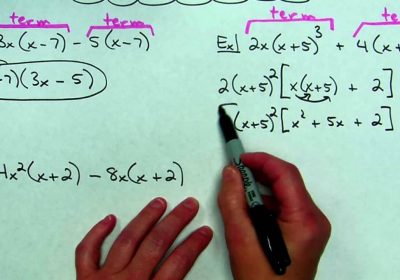
GPA vs GWA: Understanding Key Differences
GPA and GWA are two important academic performance metrics used by schools and universities worldwide. But what exactly is the difference between GPA and GWA? This comprehensive guide examines the nuanced distinctions between these two grading systems.
What is GPA?
GPA stands for Grade Point Average. It is a standardized measurement of a student’s academic achievement over time. GPA provides a numeric representation of a student’s grades across subjects, condensed into a single score.
GPA is calculated by taking the number of grade points a student earned in a period and dividing it by the total number of credits taken. The most common GPA scale ranges from 0 to 4.0. Here’s a breakdown:
- 4.0 = A
- 3.0 = B
- 2.0 = C
- 1.0 = D
- 0.0 = F
Some schools may use a weighted GPA system that assigns higher point values to advanced, honors or dual credit courses. GPA is a core component of a student’s academic record and transcript. It allows standardized comparisons between students for admissions, scholarships and more.
What is GWA?
GWA refers to General Weighted Average. It is a grading system predominantly used in the Philippines at the high school and university level. Like GPA, GWA aims to summarize a student’s academic performance into one numerical value for easy comparison.
The GWA scale ranges from 1.0 to 5.0, with 1.0 being the highest possible average. The letter grade equivalents are:
- 1.0-1.25 = A
- 1.50-1.75 = B
- 2.00-2.25 = C
- 3.00-3.25 = D
- 5.00 = F
All these calculation done through calcolatrice online tool and get the accurate result.
A student’s GWA is computed by taking the combined sum of grade points from all courses and dividing it by the total number of academic units enrolled. GWA is included on Filipino student transcripts and report cards.
Key Differences Between GPA and GWA
While GPA and GWA both measure academic performance, there are some notable differences between the two systems:
- Scale Direction
- Grade Ranges
- Ideal Scores
- Weighted Calculations
- Grade Point Scale
- Number of Grades Used
Scale Direction
The clearest difference is that GPA runs from 0.0 to 4.0, while GWA goes from 1.0 to 5.0. So a higher GPA is better, while a lower GWA is better.
Grade Ranges
GPA delineates letter grades into a 4-point range, while GWA allows for smaller 1.25-point grade ranges. GWA provides more nuance between grade brackets.
Ideal Scores
A perfect 4.0 GPA is tough to achieve. But 1.0 is considered an excellent attainable GWA, since 1.25 would equate to an A grade.
Weighted Calculations
GPA can be weighted to account for difficulty, whereas GWA is typically unweighted. GWA does not differentiate between standard and honors courses.
Grade Point Scale
The grade points themselves differ. GPA grants 4 points for an A grade. GWA assigns 1 point for an A. So the scales are inversely related.
Number of Grades Used
GPA provides a snapshot of all student grades in a period. GWA typically only uses final grades in the calculation, not individual assignments.
GPA and GWA Uses and Purposes
College Applications
Both GPA and GWA are key variables used to evaluate applicants for admission into colleges and universities. Strong GPAs and GWAs reflect work ethic and academic seriousness.
Comparing Student Achievement
GPA and GWA allow standardized comparisons of academic performance between students. They provide a consistent measurement. GWAs are especially useful for comparing students across different Philippine high schools.
Scholarship Eligibility
Meeting certain GPA or GWA cutoffs is frequently required to qualify for academic scholarships and grants. Top students can earn financial aid for maintaining excellent GPAs and GWAs.
Graduation Requirements
Most high schools and colleges establish minimum GPA or GWA requirements to be eligible for graduation. Earning passing grades and a satisfactory GPA/GWA is mandatory.
Honors and Awards
Exceptional GPAs and GWAs may qualify students for academic honors upon graduation like cum laude and magna cum laude. GPAs and GWAs determine eligibility for these distinctions.
NCAA Eligibility
For student athletes, maintaining a minimum college GPA is required under NCAA rules to stay eligible for sports programs. GPAs ensure athletes are serious students.
Graduate School Admissions
GPAs earned during undergraduate degrees heavily influence admission into masters and doctoral degree programs. Stellar college GPAs exhibit preparedness for graduate course loads.
Employment Screening
Strong GPAs and GWAs signal competence, work ethic and dedication during recruitment screening. Many employers prefer candidates with proven academic track records of success.
Converting Between GPA and GWA
With GPA and GWA on different scales, conversions between the two are not precise. However, students can derive an estimated equivalent using this approach:
- Convert GPA to its equivalent percentage (e.g. 3.67 GPA = 91% grade average)
- Plot that percentage onto the GWA scale (91% ~ 1.4 GWA)
- Convert GWA to percentage to estimate GPA (1.2 GWA = 96% ~ 3.8 GPA)
While not exact, this methodology allows students to gauge their approximate standing between the two grading systems.
Final Thoughts on GPA and GWA
In summary, GPA and GWA both measure academic achievement, but have different scales, grade point values, and nuances. GPA is more commonly used in the US, while GWA dominates in the Philippines.
For Filipino students considering studying abroad, being aware of variances between GPA and GWA is critical when submitting transcripts and test scores. With this guide, students can better understand how these two grading systems compare.






